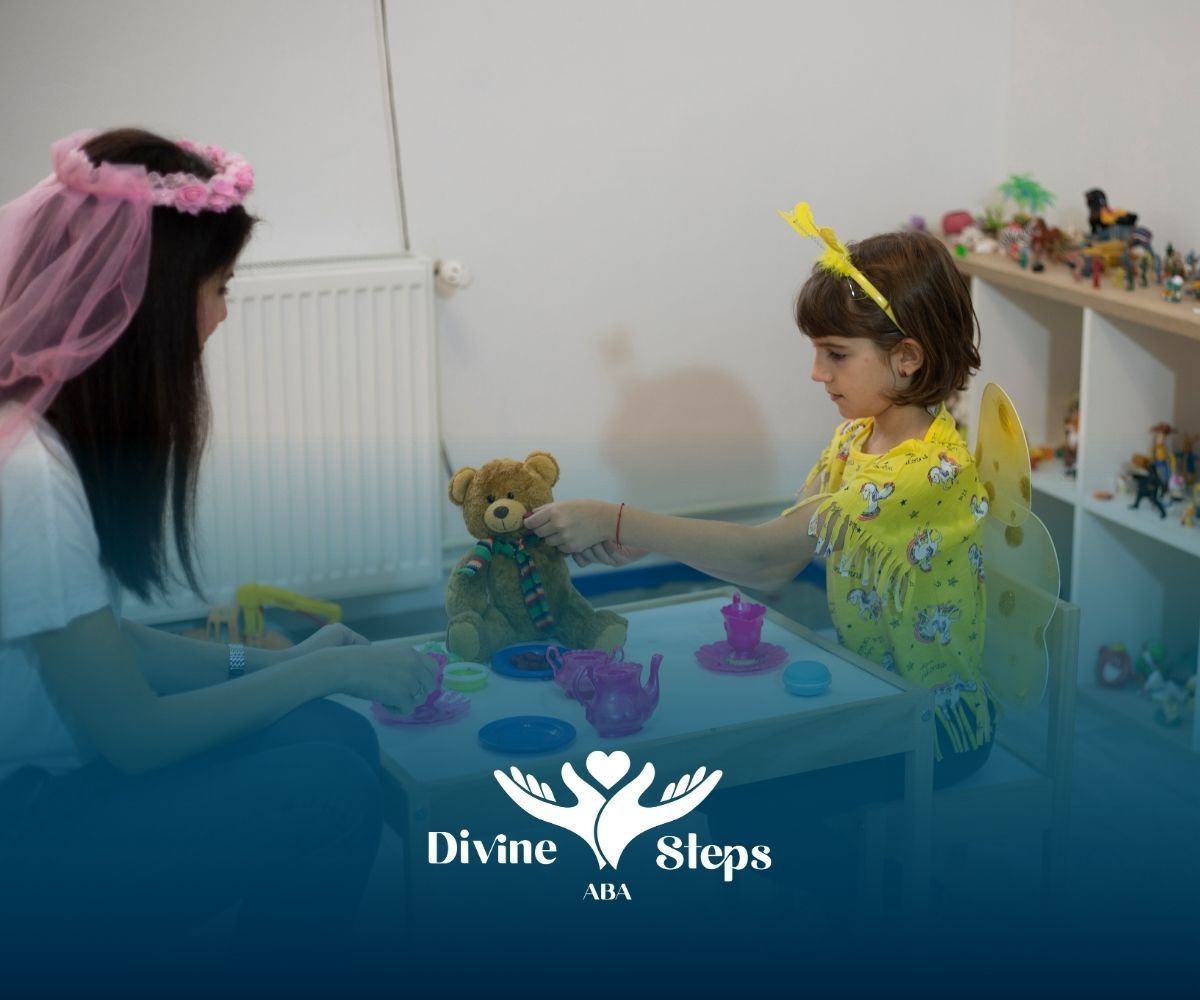Website by CWS
Can ABA Therapy Replace School?
Key Highlights
- ABA therapy focuses on positive reinforcement and systematic interventions to build essential communication, social, and independent living skills for children with autism spectrum disorder.
- Traditional school environments offer structured routines, peer interactions, and academic frameworks to support holistic development and social integration.
- Both ABA therapy and schools help develop foundational skills, but they differ in their methods, goals, and scope.
- Parents can combine ABA therapy with formal education to create a balanced approach tailored to their child’s unique needs.
- Understanding challenges like behavioral issues and sensory overload in schools is key to supporting children’s academic progress and quality of life.
As a parent, you might ask yourself whether ABA therapy could fully replace school for your child with autism.
I’ve had the privilege of working with countless families over the years who’ve had this exact question. I remember one family in particular—Lisa and Mark—who were unsure whether to transition their son, Ben, from in-home ABA therapy into a more traditional school setting.
We worked together to develop a plan where both environments supported Ben’s growth, and the results were incredible.
In this guide, I’ll walk you through how ABA therapy and schooling differ, the unique benefits of each, and how you can combine them to create a balanced approach for your child’s development.
The Traditional School Experience for Children with Autism
A traditional school setting offers much more than just academics for children with autism spectrum disorder.
Schools provide a structured routine that helps children participate in group activities and experience peer interactions. Through these interactions, children have opportunities to develop social skills and grow emotionally.
However, the school environment can present challenges. Children with autism may struggle with loud noises, sensory overload, or difficulty communicating with peers.
To address these challenges, schools use Individualized Education Programs (IEPs) and employ special education teachers to support each child's unique needs.
How Schools Support Children with Autism Spectrum Disorder
In schools, support for children with autism is centered around their IEP.
This personalized plan is developed through collaboration between parents, school staff, and therapists, ensuring that every child receives the appropriate services and resources.
Support staff such as paraprofessionals work closely with students to help them navigate their IEP goals. Strategies like sensory breaks, visual aids, and daily routines are implemented to promote learning and behavioral success.
Thanks to the Disabilities Education Act, schools are required to provide a supportive, inclusive environment that meets the needs of all students.
Therapy services like speech and occupational therapy, as well as small group settings, are often part of the IEP.
This combination of academic support and therapeutic interventions creates a more holistic approach to child development, encouraging both academic growth and social-emotional learning.
Challenges Children with Autism May Face in School
Despite these supports, the school environment can still be challenging for children with autism. Sensory issues like loud noises, bright lights, and crowded classrooms can lead to meltdowns or withdrawal.
Peer interactions may also be difficult. Children with autism might find it challenging to communicate or collaborate with their peers, which can result in frustration and feelings of isolation.
Additionally, children may struggle with transitions between activities or staying focused during class. While schools provide support to address these issues, ABA therapy can play a significant role in helping children regulate their behaviors and navigate these challenges more effectively.
ABA Therapy vs. Regular School
ABA therapy and traditional schooling both aim to help children develop essential skills, but they go about it in different ways.
ABA therapy focuses on one-on-one interventions designed to teach specific skills, such as communication, social interaction, and behavior management.
In contrast, schools offer a group-based environment where children can engage in peer interactions, group learning, and academic subjects.
Both ABA therapy and school settings help children develop core skills, but the methods differ. ABA therapy works on breaking down each skill into manageable steps, while schools provide opportunities to learn these skills in real-life scenarios.
Combining both approaches can provide a child with the best of both worlds.
Core Focus of ABA Therapy vs. Academic Curriculum
ABA therapy and traditional schooling have distinct areas of focus. ABA therapy targets individual behaviors, like communication and self-management, by using positive reinforcement techniques.
The goal is to help children gain independence and learn how to navigate various situations.
In contrast, schools emphasize academic subjects such as math, science, and history. They also provide social opportunities through group activities and peer interactions.
While ABA therapy is individualized and focused on specific needs, schools help children apply those skills in a broader, more social context.
| ABA Therapy | Traditional Academic Curriculum |
|---|---|
| Positive reinforcement | Structured classes for academic subjects |
| Task breakdown into steps | Group activities and teamwork opportunities |
| Individualized treatment | Generalized education for diverse students |
| Focus on social cues | Focus on academic milestones and testing |
Social and Developmental Aspects in Both Settings
ABA therapy and school settings both play important roles in fostering social development, but in different ways.
ABA therapy typically uses targeted exercises to teach social skills, like turn-taking and understanding social cues. These lessons are structured and individualized to the child’s unique needs.
In schools, children have the chance to practice these skills in real-world settings, such as group lessons, circle time, or recess. They can also form friendships, solve problems together, and work as part of a team.
Group learning in a school setting encourages social growth and provides opportunities to refine the skills learned in ABA therapy.
By combining both, children can grow in structured, supportive settings while also learning to navigate the social dynamics of a school environment.
Integrating ABA Therapy with School Education
Integrating ABA therapy with a traditional school day provides a balanced approach to learning and development. ABA therapy targets specific challenges, like communication or behavioral issues, while school provides a broader academic and social environment.
The combination ensures that a child receives the focused support they need while also benefiting from peer interactions and academic learning.
For the best outcomes, it’s essential that ABA therapists and school staff collaborate closely. Regular communication between the two ensures that therapy goals align with school activities, creating a seamless approach to supporting the child’s growth.
Benefits of Combining ABA and Traditional Schooling
Pairing ABA therapy with traditional schooling offers several key benefits:
- Improved behavioral regulation: ABA interventions help children learn to manage their actions, which prepares them for school routines.
- Social integration: School environments provide essential peer interactions, helping children develop social skills.
- Holistic development: The combination of therapy and schooling promotes both academic success and emotional growth.
- Better school readiness: The skills learned in ABA therapy can be directly applied in a classroom setting, making transitions smoother for children.
- Overall quality of life: Combining the two methods supports children’s academic, social, and emotional needs, giving them the tools they need for success.
Tips for Parents on Supporting Children in Both Environments
To ensure your child’s success in both ABA therapy and school, collaboration and communication are key.
Here are a few tips to help you navigate this process:
- Work closely with your child’s therapist and school staff: Make sure everyone is aligned on your child’s goals and progress.
- Attend IEP meetings: These meetings ensure that strategies from ABA therapy are incorporated into the school environment.
- Monitor progress: Keep track of your child’s development in both settings and share your observations with the professionals involved.
- Request additional support when needed: Don’t hesitate to ask for extra resources or help if your child requires more sensory accommodations or individual attention.
By following these steps, you can ensure that your child receives the full support they need to thrive both in therapy and at school.
Conclusion
In summary, ABA therapy provides valuable support for children with autism spectrum disorder, particularly in terms of behavior management and foundational skills.
However, traditional schooling offers a broader academic and social framework that is equally important for a child’s growth. By combining both ABA therapy and school, you can create a comprehensive approach that supports your child’s needs in every aspect of their development.
Remember, every child is unique, and finding the right balance between therapy and school will depend on your child’s specific needs and progress.
If you’re considering how ABA therapy can support your child’s development, Divine Steps ABA is here to help. Our personalized ABA therapy programs in Maryland are designed to meet each child’s unique needs, helping them thrive in both behavioral and academic settings.
Whether you’re looking to integrate therapy with school or simply explore the benefits of ABA, we’re here to guide you every step of the way.
Contact us today to schedule a consultation and learn how Divine Steps ABA can provide the support your child deserves. Let’s work together to create a bright future for your child.
Frequently Asked Questions
Can ABA therapy fully replace traditional schooling for my child?
No. While ABA therapy is effective in addressing social, behavioral, and foundational skills, it doesn’t provide the wide-ranging academic and social experiences that children receive in traditional school. A combination of both is usually the best option for supporting a child’s full development.
Should my child attend both school and ABA therapy at the same time?
Yes, this can be a great option. Combining ABA therapy with school provides your child with the structure and support they need in both environments. It also ensures that therapists and teachers can work together to reinforce skills and address challenges.
Is homeschooling with ABA therapy a good alternative to public school?
Homeschooling combined with ABA therapy can be a great choice for families who want a personalized educational plan. However, it’s important to assess what the school district offers and ensure your child’s Individualized Education Program (IEP) is followed.
Sources:
- https://www.webmd.com/brain/autism/individualized-education-programs-ieps-for-autism
- https://www.autismspeaks.org/tool-kit/guide-individualized-education-programs-iep
- https://pmc.ncbi.nlm.nih.gov/articles/PMC3116234/
- https://medicine.iu.edu/blogs/pediatrics/child-development-choosing-between-aba-therapy-and-school
- https://www.autismspeaks.org/applied-behavior-analysis




